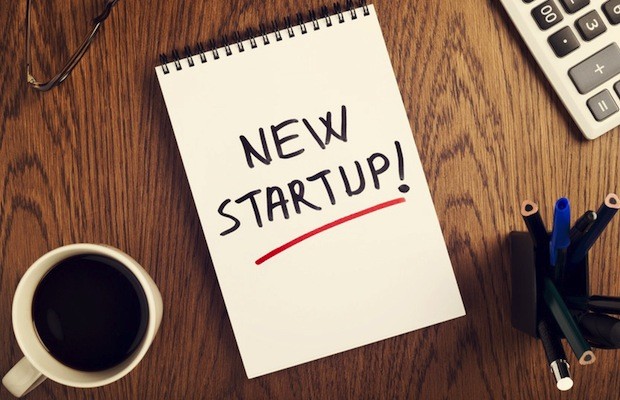Before you spend money or time on creating a product, you need to make sure there’s a real need for it. And one of the best ways to do that is through crowdfunding.
Why? Because getting real people to pay real money shows that you’ve solved a real problem. As Jason Fried, founder of Basecamp, explains: “You can’t ask people who haven’t paid how much they’re willing to pay. Their answers don’t matter because there’s no cost to saying ‘yes’ ‘$20’ ‘no’ ‘$100’. They all cost the same—nothing.” “The only answers that matter are dollars spent. People answer when they pay for something. That’s the only answer that really matters.” But is crowdfunding the right move for you and your idea? After running our own 6-figure Kickstarter campaign and speaking with other founders who found similar results, we came up with 3 key questions you need to ask yourself before you crowdfund.
Want to learn how to validate your business idea through crowdfunding and get your first paying customers in just 30 days? Join us and entrepreneur coach Ryan Robinson in 30 Days to Validate.
Do you already have a community?
We’ve all heard the Kickstarter success stories that make the platform sound like a no-brainer for raising hundreds of thousands of dollars. But the reality is that Kickstarter is less a community to tap into than it is a place to bring your own community. You just can’t expect to shoot a video, throw up your campaign page, and sit back and watch the pledges come rolling in. Here’s an example: Back in mid-2015, Javascript developer Sara Chipps decided to take her idea for Jewelbots—programmable friendship bracelets that teach girls the basics of coding—to Kickstarter with the goal of raising $30,000. “In the beginning of Kickstarter it was easier to just record a video on your phone and expect to get funding out of it. But now there’s a lot of competition out there. So a lot of elbow grease is needed to get a good Kickstarter together.” That ‘elbow grease’ included months of work before the campaign launch to raise awareness, reach out to press, and build her community. The results? Out of the $166,000 they eventually raised, the Kickstarter community brought in less than 10% of that. But Sara’s story isn’t the only one where this is the case. When we launched The Unsplash Book on Kickstarter, our project was quickly featured on Kickstarter’s homepage, as well as on the coveted ‘Projects we love’ page, giving it as much visibility to the Kickstarter community as possible. When the timer finally ran out on Day 30, however, Kickstarter attributed only 20% of our total pledges. Before you start planning your crowdfunding campaign, ask yourself this: Do you have people who care that will share your story? If not, don’t expect Kickstarter to build your community for you.Can you put in 30 days of solid work?
There are so many resources out there that will give you an insider’s look at a successful crowdfunding campaign. But every single one says the same thing: It’s a lot of work. The 30+ days of your campaign will be 30+ days of solid work emailing, promoting, reaching out to press, and begging friends and family to get you over the line. Here’s Sara explaining how they broke down their 30 day campaign for Jewelbots: “Our goal was $30,000, so I broke it down into ‘what can I do every single day to get $1000?” On Day 1, they reached out to friends and family. The idea being to get some capital in before reaching out to what they called the ‘VIPs’. “My friends and family aren’t ponying up $10,000 or anything like that. These were all $100 max. It was just sending sincere emails and asking them to share with their friends and family as well. On Day 2 they expanded their circle of influence and started to reach out to their ‘VIPs’. “There are the kind of people we really look up to. They might be our mentors or people we met at a networking event and just sending them personalized emails and asking them to check out the campaign.” Lastly, on Day 3, with momentum building, they reached out to press. “We’d reached out to reporters in the weeks leading up to the campaign, but we reached out again now that the ball was rolling and we had some money just saying ‘look at all the interesting people who’ve backed our campaign.’” Any crowdfunding campaign is going to be a full-time job. Unlike other forms of validation that you can work into your daily flow, running a crowdfunding campaign takes real effort to be successful.Can you afford to crowdfund?
One of the least talked about aspects of crowdfunding is the cost itself. The whole point of validating your idea is to find out if there is a real need for what you’re making without spending time and money. Crowdfunding takes both. There are the actual costs:- Putting together a professional video
- Paying for any physical perks
- Creating high-quality product mock-ups
- Any advertising you might choose to do
Should you choose pre-sales or crowdfunding?
All of these points aside, crowdfunding is still a fantastic way to validate your business idea. Crowdfunding gives you the chance to see if random people are willing to give you money. It also helps you build a community that understands the hardships of what you’re going through and will understand when the hiccups naturally arise. That being said, if you answered no to some or most of the questions above, it might not be the right choice (right now). But, there is another option: Pre-sales. Instead of using Kickstarter or Indiegogo as your platform, why not push for pre-sales of your product through your own channels? Sure, your reach will be lower, but you won’t be subject to any fees or restrictions imposed by another network. Let’s run through how you can set-up your own system for pre-sales:Bonus: How to set up your own pre-sale platform
First, you’ll need a secure way to accept payments before asking anyone to buy. This could be as simple as asking them to send you payment via PayPal, using a free card reader from Square to accept credit card payments, or setting up a simple product page on a platform like Gumroad. Next, you need to set a realistic price point for your products or services. Ultimately, what you charge is completely up to you, but if you need help, check out this guide we put together on how to price products. One thing to remember at this stage, is that you’re still trying to validate your business idea. Rather than getting hung up on massive profits or hitting lofty sales goals right away, you should focus on finding a few paying customers who can help you hone your pitch and product. This is something that so many aspiring entrepreneurs neglect to see the importance of, which often leads to failure, loss of motivation and disinterest in an otherwise great idea. As entrepreneur coach Ryan Robinson explains: “You have to use the tools at your disposal, especially as you’re just getting started. One of those tools is choosing to offer an otherwise very low price point for your product or service when you go out to pre-sell it to early subscribers. “That discount is in exchange for them giving a vote of confidence and waiting while you actually produce the solution—in turn, you get to prove that there is a paying market for your product before investing in it.” For example, when putting together a digital guide to hiking trails in California, Ryan started by researching similar guides from people like Lonely Planet and found they were all around the $9 mark. “I made it clear on the product page that the price point would be higher ($29) for the guide once it’s finished, to increase the urgency for those who are interested, to pick it up right now,” explains Ryan. With a price and pre-sale platform set up, you can reach out to your network and get those all-important first sales.Getting real, paying customers is one of the most incredible experiences for any new business owner. And crowdfunding can help get you there quickly. If you do it right. Before you jump into the wild world of Kickstarter or IndieGogo, be aware of what it will cost you. Not just in time, but money as well. And if you’ve decided it’s still the right path for you, go for it! You’re in for a wild ride. If not, there are other options out there that will work just as well.
This is part 4 in our 4 part series on How to Validate a Business Idea. Missed the first 3? Check out: Are you solving a problem people really have?, How to find your first paying customers, and Building an engaged community around your product.






